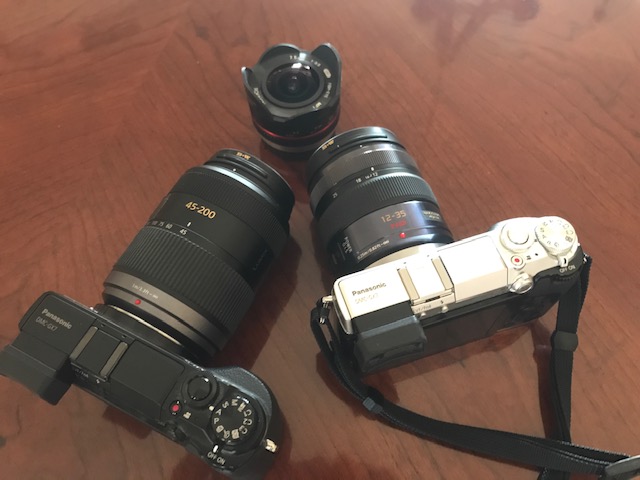We have never had it so good.
My first ‘serious’ camera was a Leica M3. Originally marketed in 1953, it came with an optical viewfinder with a central rectangle for focusing. This rectangle superimposed a second image, its coordinates determined by the subject distance. When the lens was focused on this subject distance the two images fused into one and the subject was in sharp focus. The experience was binary – there was simply no doubt about sharp or unsharp, such was the genius of the design. Leicas had long used optical rangefinders but the one in the M3 was the first to incorporate the rangefinder image into the viewfinder and the first to have crisp edges to that rangefinder image. Heretofore, the finder on the earlier screw mount Leicas was separate and, frankly, pretty awful. The M3 added icing to the cake by including an illuminated frameline to accurately define the subject area.
There was but one thing to complain about and that was that the 50mm finder frame was too thick with rounded edges and did not disappear when 90mm or 135mm lenses were mounted. These actuated the relevant frame lines but the one for the 50mm remained stubbornly in place. An otherwise uncluttered finder lost some of its minimalist appeal. I suppose there was one other complaint which was that use of the ultimate street snapper focal length, the 35mm, required either a separate finder (ugh!) or a version of the Summaron/Summicron/Summilux with the attached ‘goggles’, an auxiliary finder set designed by Rube Goldberg and about as elegant as that man’s inventions.
So Leica went one better and made the Leica M2 which for decades was my street snapper of choice. The M2, conceived as a ‘bargain’ M body (maybe the ultimate contradiction in terms, because it was still exceptionally costly) absolutely nailed it. The finder was now 0.72x rather than 0.91x in magnification, the frame lines were slim, rectangular sidelines and the focal lengths were the more useful 35/50/90 combination. No auxiliary finder lens device was required with 35mm lenses and the body + lens combination now handled like a dream.
The ‘bargain’ M quickly became the photojournalist’s body of choice. Best of all, attach any of those three focal lengths and all you would see was the framelines for that lens and that magnificent central rangefinder focusing rectangle. This was a perfect as the Leica M finder got. Later versions added clutter with multiple framelines visible at one time and cheapening of the rangefinder’s design saw to it that the focusing rectangle would flare out uselessly into the sun. Try focusing an M6 against the light and you will see.

The left opening is for the rangefinder image, the central one is the
frame line illuminator and the finder itself is on the right. The cam
roller which actuates the split image is visible atop the lens opening.
Now the Leica’s viewfinder was useless for very wide or telephoto lenses, and the growing popularity of these optics saw to it that the SLR would wrest primacy from the Leica. You could mount 20mm, 18mm, even 15mm wides on your Nikon F SLR and see the image through the lens. And 200, 400 or even 1000mm telephotos were just the ticket. But for low light snapping with the fastest manual focus possible, no SLR challenged the Leica M for speed.
Then a couple of technological developments happened. Building on Leica’s Correfot autofocus system (developed in 1976, Leica abandoned it, to their eternal shame) the Japanese developed/stole autofocusing and suddenly the subpar focus experience of the SLR was no more. Point the central rectangle at the area of interest, half depress the shutter button and critical focus was assured. Low light shooting with slower lenses was now easy and the benefits of Leica’s magnificent optical viewfinder started to fade. Then in 2008 Panasonic introduced the G1 which abandoned the SLR’s flapping mirror and clunky pentaprism, opting for an electronic viewfinder. This was like a small TV screen inside the body and its benefits were immediately obvious.
First you truly saw the exposure for the first time in a viewfinder. Mount a manual lens on the body and as you cranked the diaphragm to ever smaller apertures the image automatically maintained brightness as the circuitry cranked up the gain. Just like the brightness control on your TV, but automatic. Now you could not only see in the dark, you cold also focus in it and I jumped at the opportunity.
Sure, the G1 abandoned the 24mm x 36mm full frame of the Leica, substituting the seemingly minuscule 12mm x 18mm instead, but the quality was more than adequate and later sensors and electronic finders only made matters better, so much so that now EVFs are the happening thing in both FF and MFT bodies. Response times continue falling and we are now close to the point where EVFs can serve as well in live action ‘pan and scan’ snapping as the Nikon F of yore.
When it comes to finders, photographers have never had it so good.
My street snapper of choice is the now obsolete Panasonic G7, updated with the latest 12-35mm pro zoom. It mimics the body shape of the Leica M in an even smaller package and the electronic shutter is truly silent when activated. The only sound is the slight susurrus of the diaphragm stopping down if the lens is not at full aperture, and only the photographer can hear it. I have no use for the rear screen ‘finder’ or for the traditional focal plane shutter with all its attendant noise. Perfection.

The ultimate street outfit. Two Panny GX7s, 12-35 and 45-200
zooms, along with an inexpensive and excellent Rokinon fish-eye.